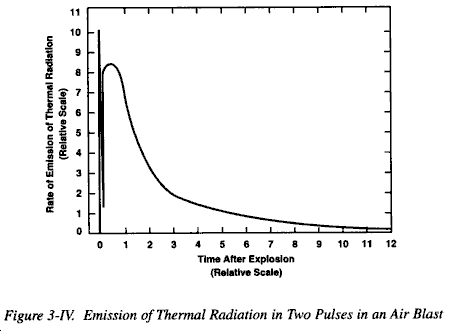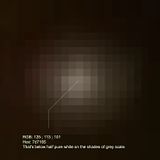I'm lost. I get the feeling we're talking about two different things, one which includes ships reaching FTL speeds with impulse engines??Jedi Master Spock wrote:"Balance of Terror" indicates that the ship is "impulse" powered. What comes to my mind are the FTL impulse examples.Mr. Oragahn wrote:A ship may have achieved warp with fusion cores, but what kind of ship? How long, at what speed?
I'm simply interested in those strong and undisputable cases of fusion powered FTL drives (warp drives) which we could study with certainty.
Perhaps. I don't know much about Trek's containment technology.I don't think it would be highly compressed. Deuterium is probably stored in the same form as antideuterium - cold mostly-frozen slush.It depends if the fuel is already highly compressed and how the torpedo's energy reaches the fuel containment unit(s).
That said, their wonderful technology in antimatter storage would suggest that the UFP also came with something very good for storing fusion fuel.
Looking at DS9 could be a good starting point. I don't think the UFP would be lagging behind the Cardassians in terms of fusion based power generation and storage of the adequate fuels, and we noticed that DS9 could pull enough power to deal with the fleet bombardments the station has been subjected to.
Also, I'd readily bet that the tanks used for deuterium storage aren't small at all, and their entire load would more than likely provide more than 100 megatons of energy.
Unless the material is blasted into an obstacle. Or even better, blasted into a cavity. Cavities such as the lastly exposed other half of the fuel tank, and any matter beyond, including ground and rock in which the ship was partially embedded in.Under the right circumstances, it would - but I don't think those circumstances qualify. It's very difficult to just blast something and have it start fusing.After all, we'd be looking towards something like antimatter triggered pure fusion, with the fuel containment device being breached on one side first, the other side continuing to act like the container it's designed to be, the fuel being the tamper on its own. One side is breached and saturated by all gamma rays, neutrons and, globally, copious amounts of energy in the petajoules.
Why wouldn't that be enough to trigger a reaction when even crude fission detonations - the device part of a stage nuclear device is refined, but the "fusion" part much less in comparison - achieve this with far smaller initial yields?
The problem I see from the little I know is the reaction being too weak and neutrons being "dampened". But how do we know that would happen for sure and literally kill the reaction, despite the initial explosion?
It's of course dependant on where the fuel tank is located. It's likely going to be at the aft of the ship, and looking at the way the ship was wedged into the rock mound, with the cockpit visible, depending on how the torpedo gets through whatever shuttle material on its path before it reaches the fuel tank(s), the effects could vary dramatically.
So we are, in fact, not sure about what would happen if that shuttle used a fusion core to power its warp nacelles.
If it uses antimatter, there's much less issues here.
It solely depends on the quantity of matter on the path and how much energy that hull and the shuttle's inner structure can absorb.Our mixture is going to be filled with vaporized hull material and is unlikely to still have enough kelvins of sheer temperature to fire off the fusion fuel meters later by heat and normal blast wave pressure unless it is already a very high yield device.
So here's our conundrum. In order to fuse deuterium with deuterium in a thermonuclear reaction, we want to flash heat it to 400,000,000 kelvins. In order to do that, we need to pump it with multiple terajoules per kilogram. This is why it's practically impossible to set off a D-D reaction using mere fission without using tricks to come up with high pressure; to put that in context, we basically need to be applying kilotons per kilogram to the fuel.
If we do that, then spontaneous fusion will start to happen. If you want it to happen quickly and therefore more completely, then you want significantly higher plasma temperatures; modern fusion weapons manage about a 50% efficiency in getting reactants to go off only by creating gigabars of pressure - a very difficult proposition that we're not going to get close to with our temperatures.
When we consider what our output is and what's going to absorb it, we're in a bit of trouble. We're putting out a lot of hard gammas, basically (and pions that whack into something after passing through about 90 g/cm^2 of material, on average, which will probably have an end product of hard gammas again) and so the shuttle hull - and fuel tank - will probably melt or be vaporized before the deuterium gets hot enough to start fusing. Now, if our device is really high yield, we could well have the gigakelvin fireball at a couple meters' radius, that we want in order to get a substantial secondary thermonuclear yield, but then we're back to the high yield problem; we're not really talking a couple megatons at that point.
Still, detonating a multi-megaton torpedo on a shuttle strikes me as terribly overkill. Perhaps this is a wrong impression, but how many terajoules per kg of deuterium are we talking about?
Torps, back then, were still omnidirectional blast weapons I think (Data may have brought focused blasts later on iirc).
I find it a stretch, for the moment, that a Tsar Bomba or more detonated on contact with a small and already damaged target would fail to
These shuttles barely have any shields, and most of structural strength would likely come through the application of a S.I.Field. In an inert state, I don't get the feeling that the shuttle would be particularly strongly armoured.
It depends on the quality of the reaction, if parameters for hyperpressure are met and how much deuterium there would be. At the very best, we could expect 6.3 e14 J/kg, or 4.2 times less if we only get fission instead of a spectacular pp chain style fusion.I don't think it'll significantly enhance the yield. You could get a small bonus on top of your yield, but not likely to be much.Also, considering that such a shuttle would achieve a decent cruise warp speed for such long periods, if using deuterium, if would obviously have to carry a consequent amount of it.
No matter if the reaction is not totally efficient, I consider it unlikely that detonating an efficient multi-megaton antimatter device ontop of a compressed hydrogen fuel tank allowing interstellar transit would lead to nothing.
Wow, that's high. Are you sure this hull strength applies to mere shuttles?Off the top of my head, hull strength will probably be around 10x iron with Treknobabble materials.That would be interesting. What would the hull strength be?
Yeah but that's still the engine. Ultimately, we don't know enough about power consumption for fusion cores, allowing for warp travel for small crafts, and we don't know enough fuel storage.The engine of a much larger ship, something that would probably carry as much fuel as the entire shuttle.But that was the engine. Not the whole fuel tank or whatever is used to store fuel, and that's on a ship that largely relies for M/AM reactions for its more power hungry systems.
The E-Nil's engine can only deal with a finite quantity of fuel at a given moment, and they didn't have other solutions left, since the DDM *cough* "neutered" *cough* antimatter.
I tried to look for other small crafts capable of long trips, like the modified probe in Emissaries, but I don't know what it was running on. If it used AM to fly at warp 9 for so long, I'd find it odd that one of the E-D's medium-long range shuttles, allowing for long trips independantly of the mother ship, would come with "crude" a fusion core.
The fireballs wouldn't cover, but the destructive effects would be enough to do a pretty good job of depopulating a continent, and are a rather larger radius than the fireball itself.[/quote]How visible and big do we know the explosion would even be. Just because Picard is standing in front of the screen means that he expected to see the explosion, and even if that's so, he has the luxury of having a high tech screen, thus a high resolution, which means the smallest explosion would not be limited by the screen's ability to show it, but by the captain's sight while standing in front of it. Besides, how white would the flash be, while originating from the shadowy part of the planet?
Most interesting is that even if we took the flash's outmost boundaries as those of a fireball, even more than 200 torpedoes would not cover even an entire continent on Earth.
But that would still fall terribly short of the mass planetary destruction claim, lest slagging.
Besides, here's something I did from the flash of SoE:
Of course, that's just for the kicks of using the flash in a most biased, selective and ultimately useless way.


